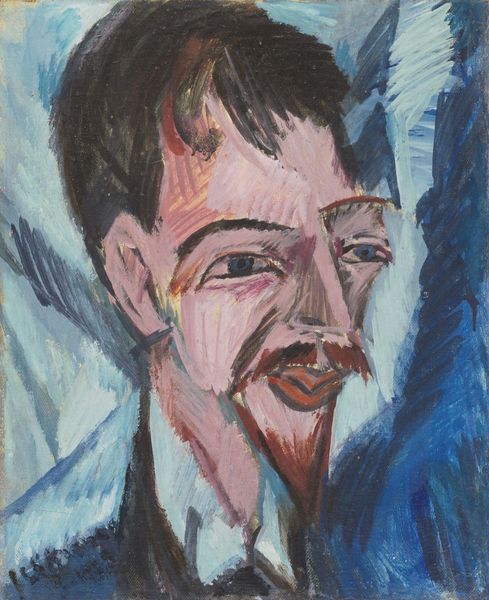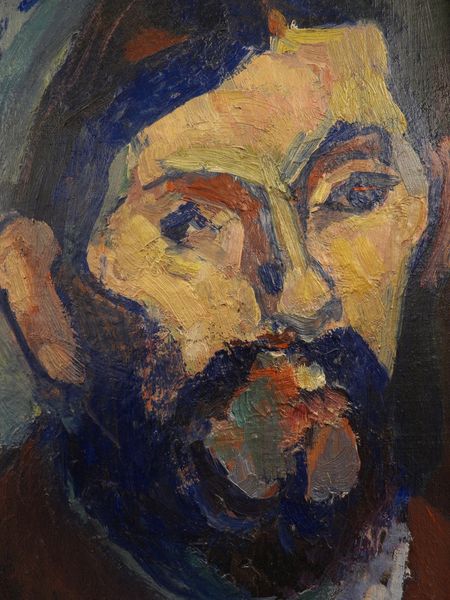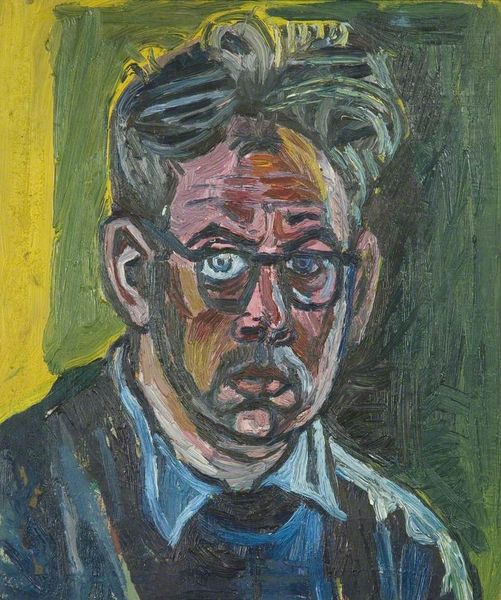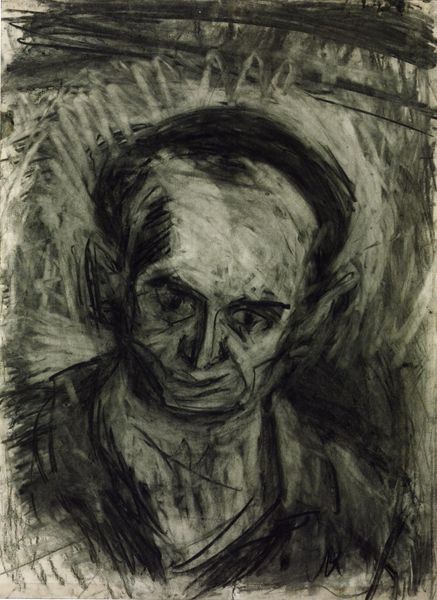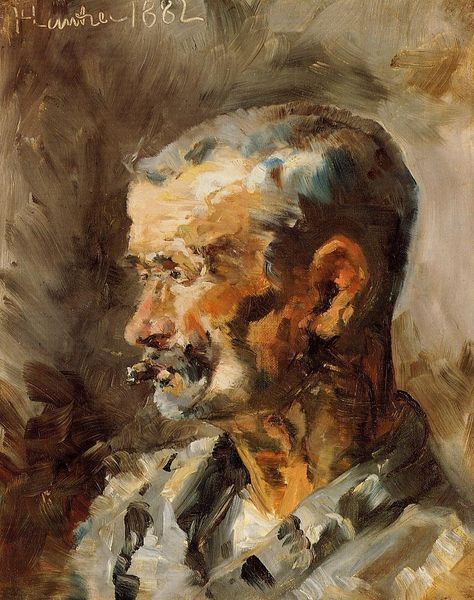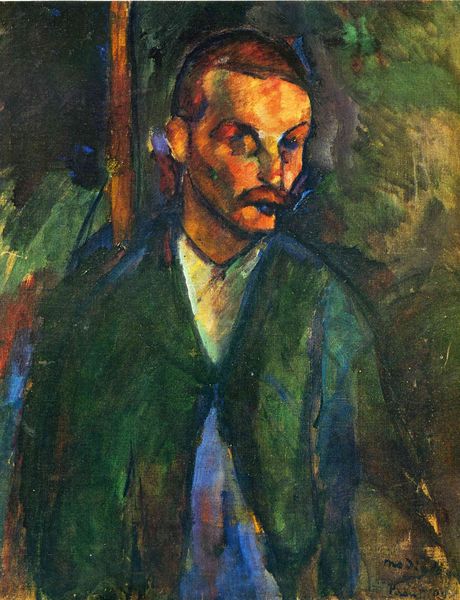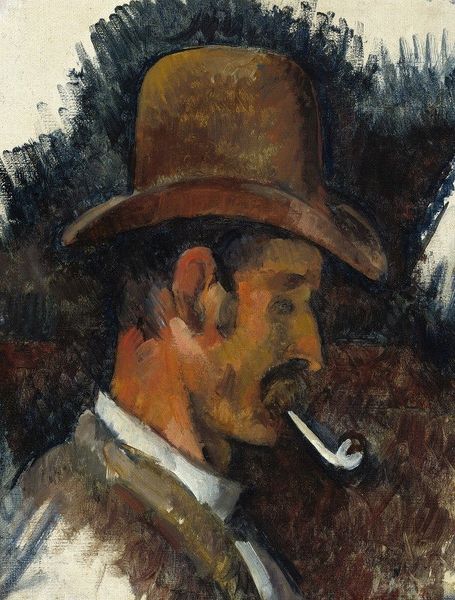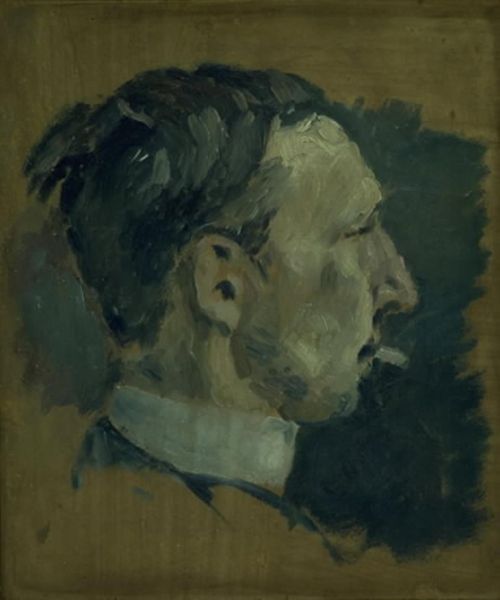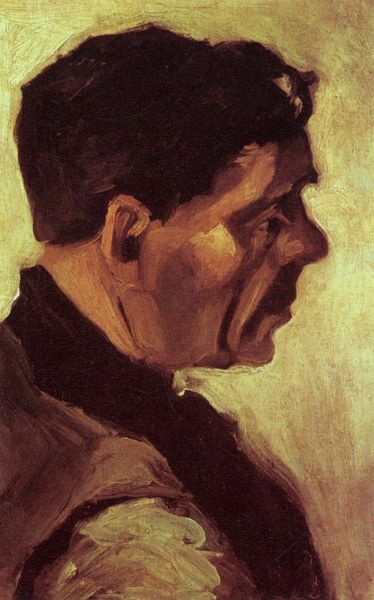
oil-paint
#
portrait
#
oil-paint
#
oil painting
#
expressionism
#
modernism
Copyright: Public domain US
Editor: This is Tyko Sallinen’s “Puunhakkaaja,” painted in 1917. It’s an oil painting of a woodcutter, and the texture of the brushstrokes makes me really focus on the materiality of the paint itself. What do you make of it? Curator: Looking at the heavy application of oil paint, one is immediately struck by the physical act of creation. Sallinen doesn't just depict a woodcutter, but emphasizes the labour involved in making the art itself. The thick impasto evokes the woodcutter’s own labor, his physical exertion. Do you notice how the earth tones seem to emerge organically, almost as if pulled directly from the soil the woodcutter might be working? Editor: That’s a good point. The palette really reinforces that connection to the land. So you're saying the materiality of the painting reflects the labor it represents? Curator: Precisely. Consider too the context. 1917… Finland was on the cusp of independence. The painting portrays not a romanticized peasant, but a man intimately connected to the means of production, to the resources of the land. Do you think this impacts our understanding? Editor: Definitely. It makes the painting feel much more grounded in reality. I see the woodcutter not just as a figure, but as part of the machinery of society at that time. Curator: And it compels us to question the hierarchy often imposed between art and craft, doesn’t it? Here, painting acknowledges its own construction and its links to manual labor. Editor: It’s like the painting is enacting a sort of… artistic labor itself, to honor the woodcutter's physical labor. I’ll never see this painting the same way again. Curator: And hopefully appreciate how an artwork's materials and making processes deeply intertwine with its social and political context.
Comments
No comments
Be the first to comment and join the conversation on the ultimate creative platform.


